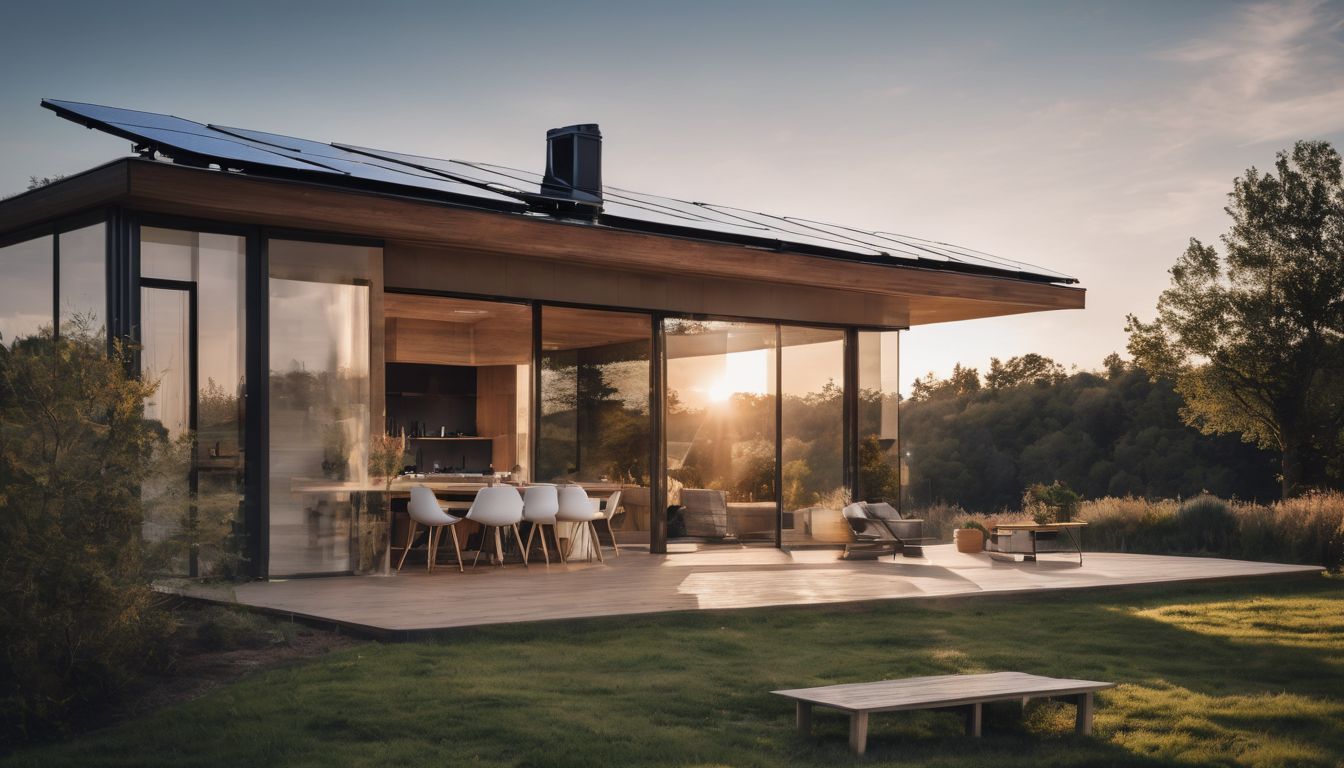The problem a lot of people have with trying to make their home or apartment more energy-efficient is that energy efficiency is deadly boring. As a municipal energy management consultant, I know how quickly eyes start to glaze over when I start talking about heating systems, insulation, and smart windows. One way to counter the bores of kilowatts (kWh) and therms1 is to use technology! New technologies have begun to make energy management more interactive. There are new websites, smart phone applications, thermostats, and more. Tracking you energy usage is a fun way to save money and the environment.
BENEFITS FOR THE ENVIRONMENT: Using technology to monitor and save energy means that fewer emissions associated with electricity and fuel generation will be released into the atmosphere.
BENEFITS FOR YOUR WALLET: Using less energy means a lower electricity and natural gas bill.
Cost: Low-Medium, varies. Energy monitoring thermostats and software can be costly, but many of the technologies discussed here are available for free.
Time and Effort: Low-Medium. Figuring out how much energy you use can take some time up front, but most of the technologies I list here are designed to make monitoring your energy use extremely easy. On the other hand, some of these technologies make energy tracking so fun that you may find yourself spending more and more time thinking about ways to reduce your energy use.
STEP 1: Figure Out How Much Energy You Use & Compare with Friends

You have to know how much energy you are using now in order to measure whether any changes you make to try to reduce your energy actually work. The easiest way to know how much energy you are using is to check your utility bill. Most utility companies allow you to see your energy usage over time on their website. And, if you have a smart meter, you can even see minute-to-minute changes in your usage when you log in to your online account. This can lead to some valuable information. For example, how much your energy spikes when you use a hair drier in the morning.
Once you have a rough idea of your energy use, check out some sites that will allow you to see how your home measures up to others with a similar profile, find suggestions for how to lower your energy use, and figure out what the energy hogs in your home are. Here are some good places to start:
- https://www.energystar.gov/index.cfm?fuseaction=
HOME_ENERGY_YARDSTICK.showGetStarted - http://www.csgnetwork.com/elecenergycalcs.html
The Facebook App
Once you know how much energy you use, the new Facebook application allows you to share that information with your friends. The app will allow facebook’s 800 million users to post their energy use to their facebook “wall” and compare their usage with the national average and with friends.2 The “social energy” app also has the ability to generate recommendations for how to conserve energy based on a person’s previous purchases, much like Amazon recommends books and Netflix recommends films. For more information on this app, read here .
STEP 2: Find the Right Thermostat
Invariably, the easiest way to save energy is to make sure your heating and cooling systems are only on when they are needed.
The Programmable Thermostat
If you don’t already have one, invest in a programmable thermostat. Programmable thermostats can be set to change temperature several times a day, cooling it when you leave for work, warming the house in preparation for your arrival, and cooling it again when you normally go to sleep. According to the US Department of Energy, you can save between 10% and 40% a year on your heating and cooling bills just by setting your thermostat back 10°–15° for eight hours (that means down to 55° when you are away or sleeping).3
Despite the benefits of programmable thermostats, studies have shown that while 10 million thermostats are sold every year, only 6% of programmable thermostats are actually programmed. As inventor Tony Fadell recently observed, “instead of programming their thermostats, most people have given up and treat it like a light switch,” “but you have to make those manual adjustments about 1,500 times a year if you want to see any real energy savings.”4 In November of this year Fadell, one of the former Apple executives part of the team that created the iPod, released a new product that he hopes can solve this problem—the new Nest Learning Thermostat. The Nest Learning Thermostat uses software that analyzes and tracks your energy usage patterns over time. Users only have to adjust their thermostats about a dozen times before the thermostat can anticipate their desired temperature and control their home’s heater and air conditioner automatically.5
STEP 3: Invest in Energy Management Software
Once your thermostat is under control, consider investing in energy management software. Commercial facility operators have been using these wireless energy dashboards to monitor energy data and wirelessly adjust energy hogging appliances for years, but the market for home energy management systems has only recently started to take off.6 Now that energy management software companies are starting to develop apps for iPhones and iPads, you can expect to see people checking their home energy consumption in real time on their smart phones, receiving warnings when they are about to go into the next rate tier, and controlling connected appliances and thermostats remotely.7
STEP 4: Spread the Savings—The Community Energy Meter

In 2009, Puget Sound Energy announced plans to build a new substation on Bainbridge Island, Washington to meet increasing demands for electricity. The residents of the Island did not take well to the idea of cutting down the island’s historic trees to make way for a power plant, and they started a campaign to try to cut the island’s electricity use by 15 percent in three years.8
To help the community with the challenge, Positive Energy, a local nonprofit organization created a first-of-its-kind, web-based community energy “dashboard.” This color-coded meter provides electricity grid. When the needle dips into the red, the message is clear: Cut down your energy use or the power company will be here cutting down trees for that new substation.
For those who don’t obsess over the energy dashboard day in and day out, Positive Energy has also installed dashboards with digital displays all over the island at cafés, bookstores, and the grocery store. Soon, another nonprofit hopes to set up an online competition between different neighborhoods that shows up-to-the minute energy data.9 They are hoping it will “be like a community softball league for energy geeks.”10
SIDE STEP: Watch the Energy Bills on YouTube
If advanced thermostats, Facebook, and smart phones really just aren’t your thing, maybe funny online videos are. The Energy Bills are a hilarious duo (at least funnier than any other conceivable method of educating people about energy efficiency) on a quest to teach people how to lower their energy bill. The Bills are the brainchild of Energy Impact Illinois, a program that encourages Chicagoans to use energy-savvy tools to deal with the cold winter months. Even those of us who don’t live in cities that resemble ice pops for half the year can learn from the Bills ☺




